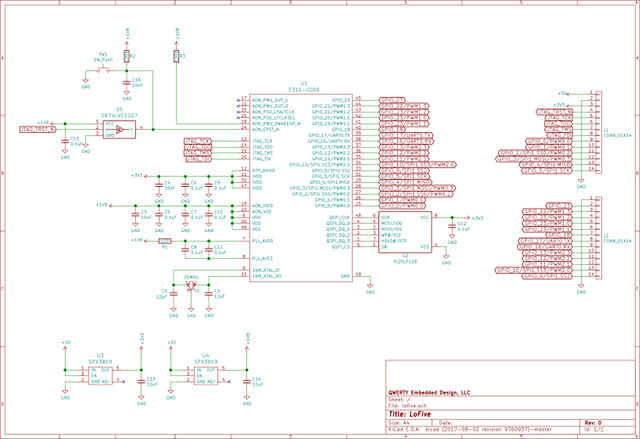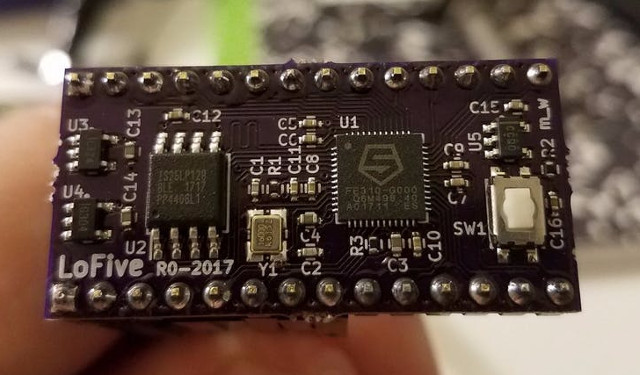Do you remember HiFive1? It’s an Arduino compatible board based on the SiFive FE310 open source RISC-V SoC. Michael Welling has now started working on LoFive board using the same processor, but in a much smaller & breadboard friendly form factor.
LoFive board specifications:
- MCU – SiFive Freedom E310 (FE310) 32-bit RV32IMAC processor @ up to 320+ MHz (1.61 DMIPS/MHz)
- Storage – 128-Mbit SPI flash (ISSI IS25LP128)
- Expansion – 2x 14-pin headers with JTAG, GPIO, PWM, SPI, UART, 5V, 3.3V and GND
- Misc – 1x reset button, 16 MHz crystal
- Power Supply – 5V via pin 1 on header; Operating Voltage: 3.3 V and 1.8 V
- Dimensions – 38 x 18 mm (estimated)
The board will be programmable with Arduino IDE + Cinco just like HiFive1 board.

The board is also open source hardware, so beside the aforelinked info on Hackster,io, you’ll also find the KiCAD schematics, PCB layout, and 3D renders, released under CERN Open Hardware License v1.2, on Github.

Jean-Luc started CNX Software in 2010 as a part-time endeavor, before quitting his job as a software engineering manager, and starting to write daily news, and reviews full time later in 2011.
Support CNX Software! Donate via cryptocurrencies, become a Patron on Patreon, or purchase goods on Amazon or Aliexpress





